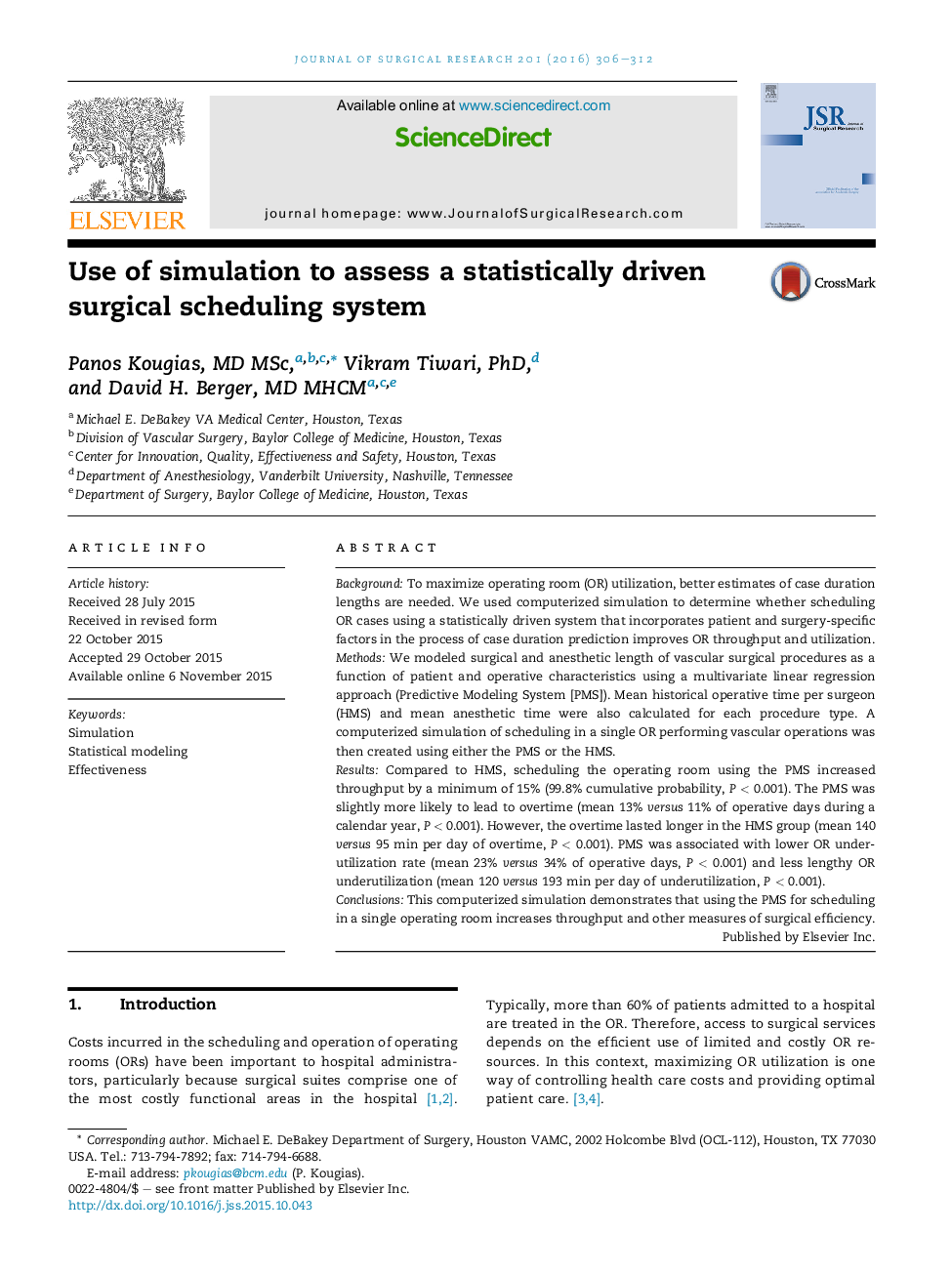| Article ID | Journal | Published Year | Pages | File Type |
|---|---|---|---|---|
| 4299384 | Journal of Surgical Research | 2016 | 7 Pages |
BackgroundTo maximize operating room (OR) utilization, better estimates of case duration lengths are needed. We used computerized simulation to determine whether scheduling OR cases using a statistically driven system that incorporates patient and surgery-specific factors in the process of case duration prediction improves OR throughput and utilization.MethodsWe modeled surgical and anesthetic length of vascular surgical procedures as a function of patient and operative characteristics using a multivariate linear regression approach (Predictive Modeling System [PMS]). Mean historical operative time per surgeon (HMS) and mean anesthetic time were also calculated for each procedure type. A computerized simulation of scheduling in a single OR performing vascular operations was then created using either the PMS or the HMS.ResultsCompared to HMS, scheduling the operating room using the PMS increased throughput by a minimum of 15% (99.8% cumulative probability, P < 0.001). The PMS was slightly more likely to lead to overtime (mean 13% versus 11% of operative days during a calendar year, P < 0.001). However, the overtime lasted longer in the HMS group (mean 140 versus 95 min per day of overtime, P < 0.001). PMS was associated with lower OR underutilization rate (mean 23% versus 34% of operative days, P < 0.001) and less lengthy OR underutilization (mean 120 versus 193 min per day of underutilization, P < 0.001).ConclusionsThis computerized simulation demonstrates that using the PMS for scheduling in a single operating room increases throughput and other measures of surgical efficiency.
